Go big or go home, right? Well, the Flemish Giant is the largest creature known to rabbit kind and is the biggest of all giant rabbit breeds. It is the animal for you if you’re looking for a pet rabbit that bounces like a bunny but takes food off the kitchen table like a puppy.
There’s more to this giant bunny than just its size, though. The Flemish Giant has a fascinating history and occupies a special place in the world of rabbits. They have quite a character as well when compared to the many smaller breeds out there.
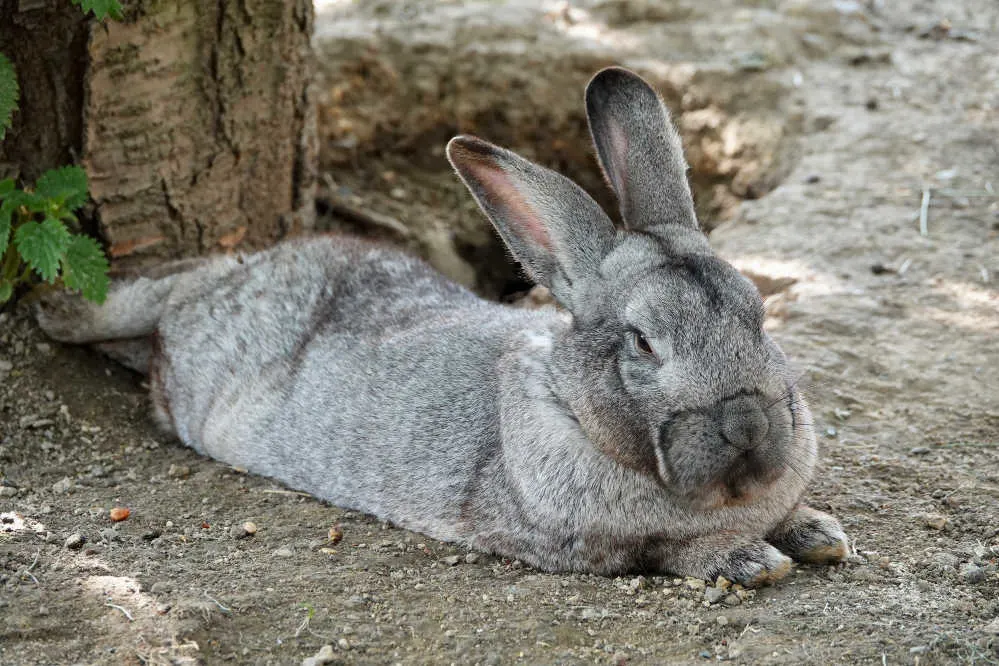
A Flemish Giant rabbit requires special care because of its large size, so you should know a few things before purchasing one. Continue reading if you want to learn more about this unique breed, including how big Flemish Giant rabbits get, and determine if it’s the right bunny for you.
Origins of the Flemish Giant
The Flemish Giant has been around for a long time. They were created in the 16th century in Flanders (now northern Belgium). Flemish Giant breeders crossed several different meat and fur breeds to develop the ideal meat and fur rabbit.
The Flemish Giant was first documented as a breed in 1860. The first breed standards for rabbits were established in 1883.
In the late 19th century, when bunny husbandry was booming in the United States, breeders of Flemish Giant rabbits moved the breed there.
But it wasn’t until 1910 that interest in the Flemish Giant took off. This was the first year these large rabbits began appearing at fairs and livestock competitions. This was also the year they were recognized by the American Rabbit Breeders Association (ARBA).
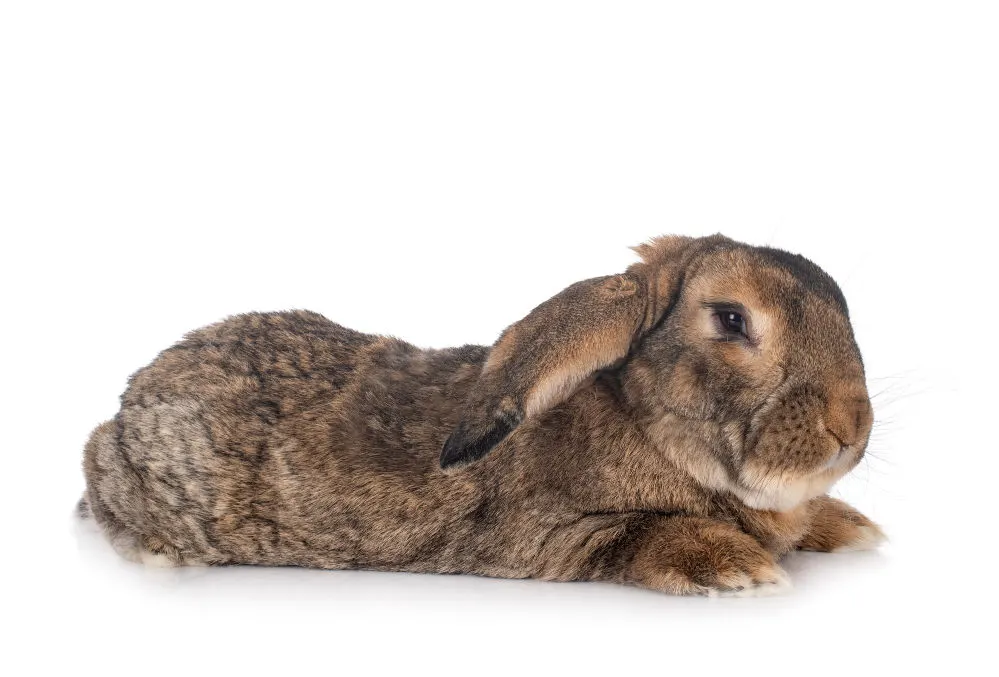
The Flemish Giant rabbit remains a source of meat and fur today. However, a lot of people also keep them as pet rabbits.
Characteristics of the Flemish Giant
The Flemish Giant is arguably the most impressive bunny in the world. You may initially think they are a bouncy dog if one comes hopping along.
According to breed guidelines, a Flemish Giant has a big, beautifully shaped head, upright ears, a tall, robust body, a uniformly-colored coat, and a nicely rounded rump.
Coat and color
The thick, lustrous fur of the Flemish Giant bunny is medium in length and smooth. They struggle to manage the heat properly because of their thick coat. If you reside in a warm climate, you should consider this.
The National Federation of Flemish Giant Rabbit Breeders in the United States recognizes only seven colors of Flemish Giant Rabbits. These colors are fawn, sandy, white, steel gray, blue, black, and light gray. They typically have brown eyes. Giants with blue coats have blue/gray eyes, and if they have a white coat, their eyes will be pink/red.
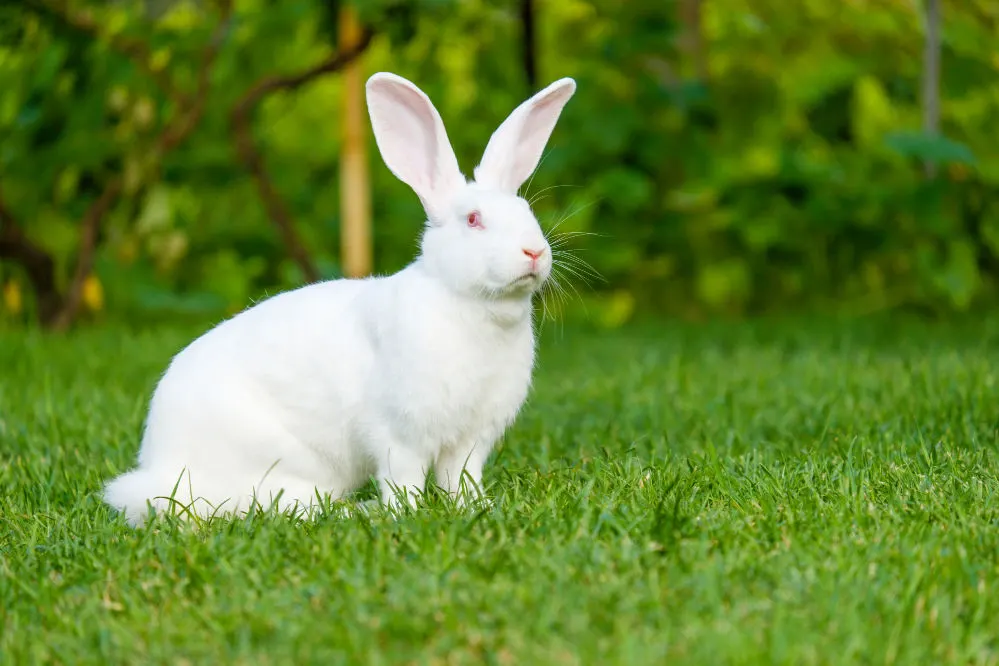
Temperament
Prospective bunny owners may find this big bunny scary, yet these furry lumps have one of the best dispositions! These rabbits, sometimes known as gentle giants, are loving and quiet and make excellent companions. They enjoy being the center of attention and won’t hesitate to sit on your lap for a hug. These rabbits are extremely loyal and may pick a “favorite” person in your family.
Flemish Giants make wise companions due to their docile nature. Like most rabbits, they can be taught to use a litter box. They can pick up tricks as well. Additionally, because of their size, they may live comfortably with other pets, something that many people love about them.
How big do Flemish Giant rabbits get?
These bunnies are regarded as the world’s largest breed of rabbit. They are 2.5 – 3 feet (76.2 cm) long and weigh around 15 pounds (6 kg) on average. The Flemish Giant male can easily reach 22 pounds (10 kg) at maximum weight, while female Flemish Giant rabbits can reach 20 pounds (9 kg).
Darius, a male Flemish Giant just over 4 feet long (1.2 m) and weighing 49 pounds (22 kg), established a place in the Guinness World Records.
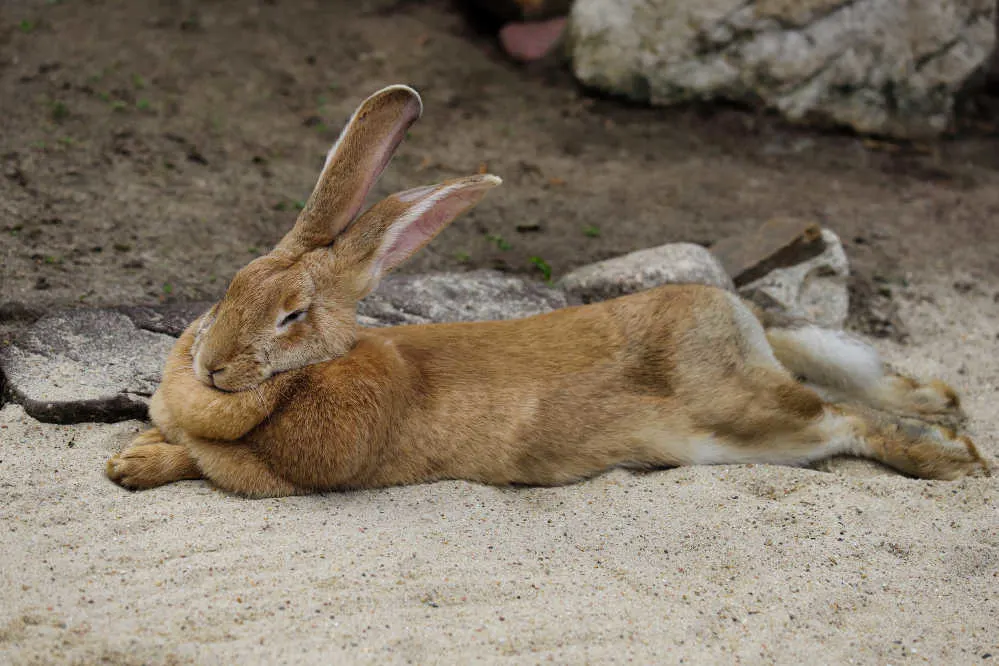
Compare them to the Dutch rabbit, one of the most familiar bunny breeds, to get a sense of scale. These are a variety of domestic rabbits, typically weighing 4 to 5.5 pounds (1.8 to 2.5 kg). Flemish Giant rabbits on the other hand are more comparable in size to medium-sized dogs.
The body of a Flemish Giant rabbit is large and robust, with broad hindquarters. These bunnies are referred to as “semi-arch” breeds because of the slight but discernible arch in their spine.
How much do Flemish Giant Rabbits weigh on average?
The average Flemish Giant weighs roughly 15 pounds (7 kg), according to the People’s Dispensary for Sick Animals (PDSA). Three Chihuahua dogs combined weigh the same amount as that. Male rabbits typically weigh more than female rabbits do.
Show-worthy giant Flemish rabbits typically weigh 22 pounds (10 kg). That weighs the same as two gallons of paint.
How much space do they need?
Your bunny’s house should be at least 3 feet by 4 feet (1 m by 1.2 m) for a rabbit this size. This is adequate for one Flemish Giant, but you need double the size if you have two of these bunnies. Generally speaking, you should choose the biggest hutch you can find.
A bunny should be able to perform at least three consecutive jumps inside the enclosure, according to Rabbit Welfare. The space required can be roughly calculated by multiplying your furry friend’s body length by four. As a result, you’ll need an enclosure at least 10 feet (3 m) long if your Flemish Giant is 2.5 feet (76.2 cm) long.
Additionally, the rabbits’ enclosure should allow them to lay outstretched width-wise comfortably. Aim for a breadth of 4 feet (1.2 m) if your bunny is 2.5 feet (76.2 cm) long.
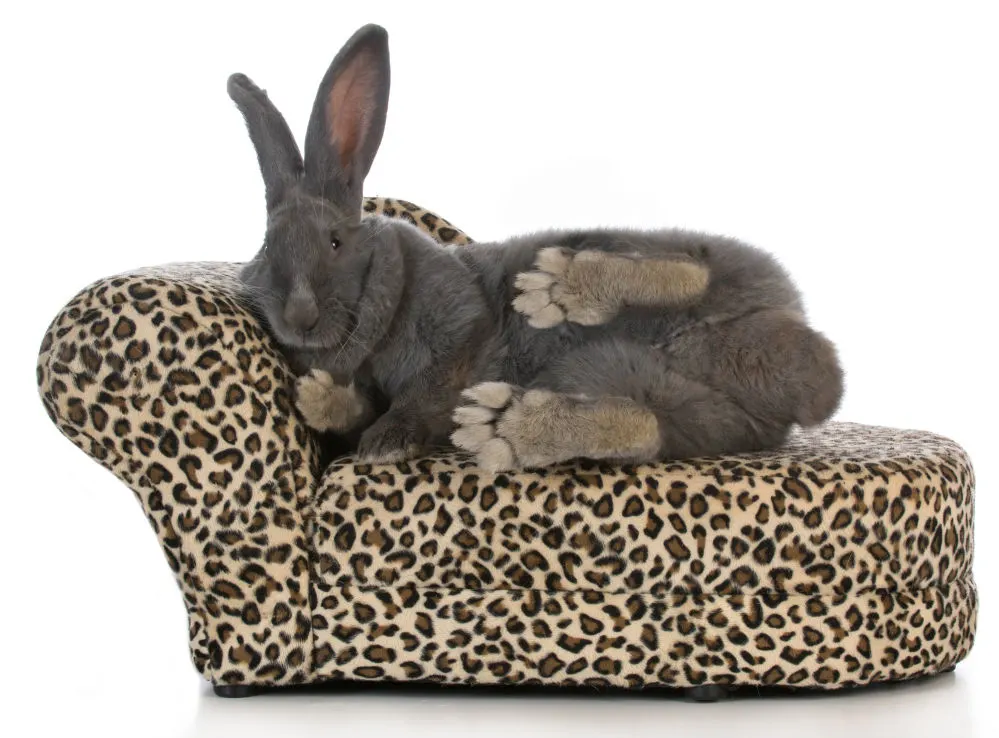
Furthermore, because Flemish Giant bunnies frequently stand on their hind legs, the enclosure must be at least as tall as your rabbit standing straight up (plus a bit more). Therefore, a cage that is at least 4 feet (1.2 m) tall would be required for the typical Flemish Giant.
The Flemish Giant may occasionally jump as high as 3 feet (1 m). Knowing this is especially helpful if you plan to construct an outdoor pen for them to roam in. They shouldn’t be able to jump the fence and flee.
It’s best to give your Flemish as much room as you can. You don’t want them to ever feel cramped or enclosed. They are, after all, a naturally curious and inquisitive breed that likes examining their surroundings.
Caring for Flemish Giant rabbits — is it different?
Despite some significant changes, giant rabbits’ demands are comparable to those of smaller bunnies.
They consume much more food than tiny rabbits, as you might expect. In addition, they require more grooming and care than the majority of smaller bunnies. However, the amount of space that giant and regular-sized rabbits require is the primary differentiation, with this large breed needing enough space to move around and play in.
Food and diet
The appetite of a Flemish Giant matches their stature. If you’ve ever owned several breeds of smaller rabbits, you might be shocked by the Flemish Giant’s appetite.
Your rabbit’s diet should consist of at least 70% hay and 20% rabbit pellets (learn more about what rabbit pellets are made of). Timothy hay is a popular option amongst bunny lovers. Limit treats to 10% or less of your bunny’s diet.
Fresh vegetables and fruit can also be incorporated. Limit the amount of fruit they eat, though, as too much sugar can cause issues like diabetes. Because of the size of their appetite, they can eat more than a standard smaller bunny, though.
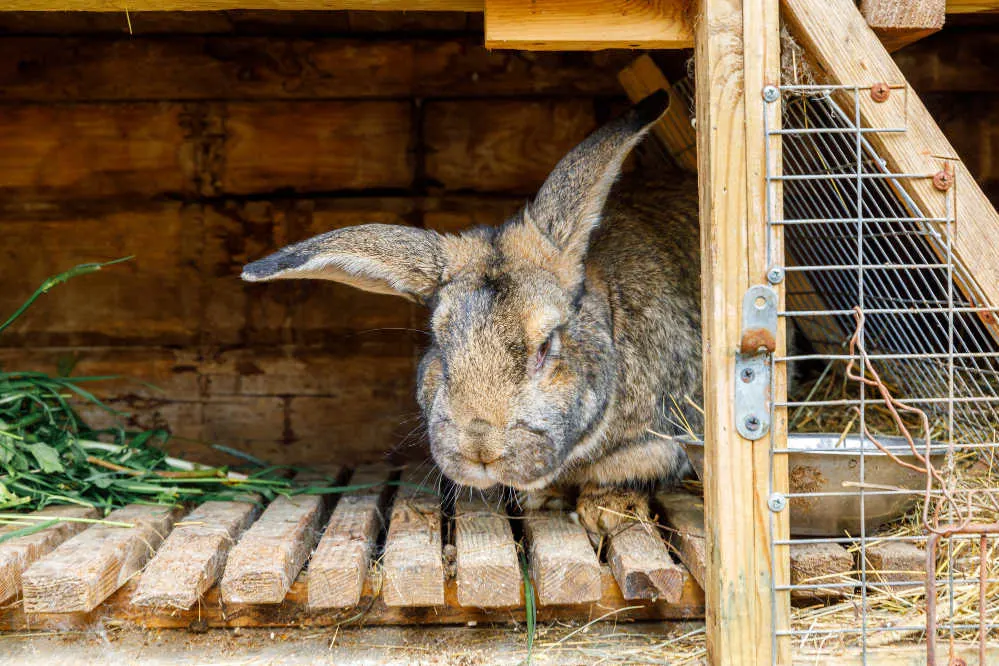
The RSPCA estimates that a typical rabbit would consume one to two egg cups (25 – 50 g) of high-fiber pellets daily. But a giant Flemish can devour five to seven egg cups (125 – 175 g) every day. Watch their girth carefully though and cut back if they gain too much weight.
Flemish Giants take a year and a half to attain maturity compared to other rabbits that reach it in 3-6 months. So, until they reach their adult size, some veterinarians advise feeding them more than five to seven egg cups (125 – 175 g) of pellets to fuel their growth.
Additionally, ensure your Flemish Giant has constant access to fresh, clean water, and a lot of it. Although all bunnies are heat-sensitive, the Flemish Giant’s size and fur makes them even more so. Get them some big water bottles to make sure they’re always hydrated.
Remember, the better their diet and the more exercise your fluffy friend gets, the longer your Flemish rabbit will live and shower you with bunny love.
Grooming
Giants from Flanders have medium, thick coats. This is advantageous since a shorter-haired rabbit needs much less grooming.
Thankfully, the Flemish Giant rabbit does not require a lot of maintenance. Unless they are shedding, in which case they should be brushed twice a week, these bunnies only need to be brushed once a week. They typically shed their coat twice a year, In the spring and the fall.
A fantastic way to strengthen your bond with your fluffy friend is to brush them. However, never wash a bunny! Shampoo strips their coats of its natural oils and can cause skin problems.
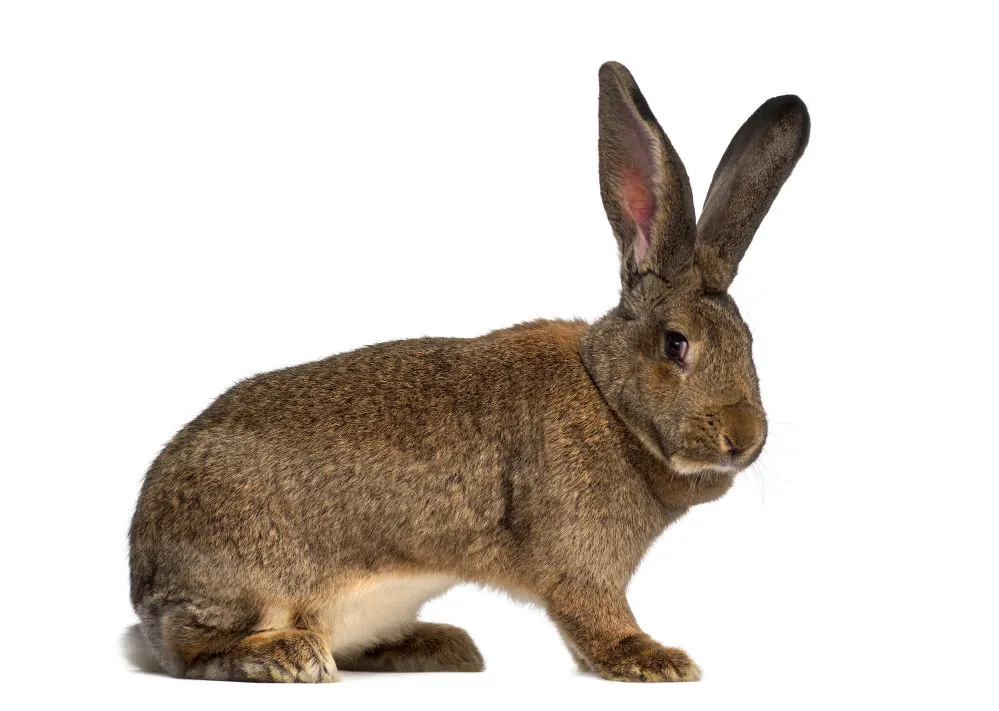
Rabbits may find it more challenging to groom themselves if they are injured or old. Therefore, use pet-friendly wipes for a gentle, safe cleanup if your bunny needs assistance.
Their nails should be cut when necessary. Typically, rabbits exercise to wear their nails down. You should frequently examine their ears and fur for any indications of ear or fur mites. This rabbit grooming kit has everything you’ll need to take care of your fluffy bunny.
Final thoughts on Flemish Giant rabbits
The Flemish Giant rabbit is a kind and sociable animal, so don’t let their immense size put you off. These bunnies have relatively modest care requirements and are pleased to lounge around the house next to you, although they require a lot of space to live and wander.
This giant fluffball is excellent company and low maintenance, making them ideal for families with children. A Flemish Giant might be what you’re searching for, as all they want is love and attention.
There are several factors to consider when it comes to this breed. After all, they are the biggest breed of rabbit. But luckily, they are frequently calm, submissive, and kind-hearted. These true gentle giants make great pets.
Steph Dyson is a travel journalist by trade but a lover of all small pets. She’s been a pet mum to everything from gerbils to guinea pigs, rabbits to hamsters, and fish to dogs of all shapes and sizes. She wants to share her years of experience with small pets and make Small Pet Guides the go-to website for pet owners seeking information and care advice.

